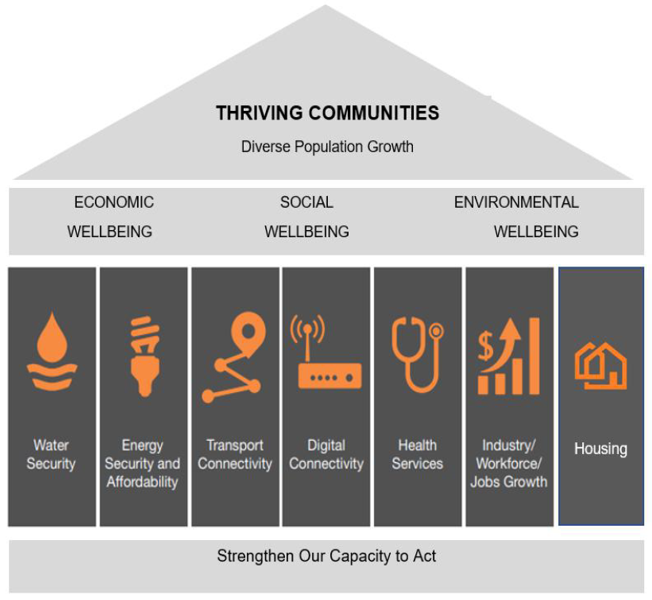RAMJO’s Profile
The Riverina and Murray Joint Organisation’s region is diverse. From its regional cities with thriving retail centres and viticulture, to the vast landscapes and plains in its more remote areas, its community and economic profile proves a productive one.
RAMJO is experiencing a population growth and housing and statistics are demonstrating that the construction of new developments in residential and industrial estates are also increasing.
Agriculture is the largest industry in the RAMJO region, followed by manufacturing. In 2022/23, the total value of agricultural output in the Riverina and Murray Region was $3,726.92m. The largest commodity produced was cereal crops, which accounted for 31.0% of the Riverina and Murray Region’s total agricultural output in value terms.
Our Community Demographics
The Riverina and Murray Region Estimated Resident Population for 2023 is 154,312 with a population density of 1.86 persons per square kilometre. The Riverina and Murray Joint Organisation Community Profile provides demographic analysis for the Region and its suburbs based on results from the 2021, 2016, 2011, 2006, 2001, 1996 and 1991 Censuses of Population and Housing. The profile is updated with population estimates when the Australian Bureau of Statistics (ABS) releases new figures.
Our Economic Statistics
The Riverina and Murray Joint Organisation’s Gross Regional Product is estimated at $11.23 billion, which represents 1.5% of the state’s GSP (Gross State Product).
The Riverina and Murray Joint Organisation’s economic profile presents economic information that enables you to describe the area’s role within the broader economy, explore options for economic development and promote the area’s strengths. The information presented here is derived from official sources of information (Australian Bureau of Statistics) as well as Australia’s leading economic modelers (NIEIR). The latest data from each series is always presented in this site.
RAMJO’s Vision
RAMJO’s member councils collaborate effectively through strategic planning, priority setting, advocating, engaging with Governments and key stakeholders to facilitate infrastructure development and ensure the long-term sustainability, wellbeing and liveability of the region’s communities.
RAMJO’s Principles
- be owned by and accountable to the Member Councils;
- not impose significant red tape cost or risks on Member Councils;
- ensure that benefits delivered for the region outweigh any costs and risks;
- work collaboratively with other levels of government, other partners and stakeholders;
- enable significant projects and initiatives, with associated funding and assets, to be managed regionally, where doing so is consistent with the shared vision for the region;
- ensure good governance;
- serve the best interests of the region and communities.
RAMJO’s Values
- Communication: We are honest, transparent, clear, robust, respectful and timely with our communication
- Authentic: We harness our diversity and work to our strengths by inviting and respecting our unique perspectives, talents and feedback
- Cohesive: We are committed to reaching our common goals together, so we speak with one voice on regional issues
- Evidence based: Our decisions are based on evidence and are aligned with local, regional and state strategies and policies
- Reliable: We trust each other to be consistently reliable
- Vision: We focus our attention on the big picture and challenge and support each other to be visionary and innovative in our thinking




Our Strategic Priorities
Our goal:
To increase diverse population growth within RAMJO.
Our Strategic Priority Pillars:
- Improve Water Security
- Improve energy security and affordability
- Improve transport connectivity for freight and people
- Improve digital connectivity
- Better match health services to our changing needs
- Boost industry, workforce and jobs
- Improve housing in our region.
Our foundation for Action:
Strengthen our capacity to act as a Joint organisation and as individual Councils.

